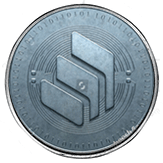Compound is a cryptocurrency lending and borrowing platform that runs on the Ethereum network. It allows users to earn interest on their crypto assets by supplying them to a pool of liquidity or borrow crypto assets by collateralizing some of their own assets. Compound is one of the leading projects in the decentralized finance (DeFi) space, which aims to create an open and permissionless financial system using blockchain technology. Founded by Robert Leshner and Geoffrey Hayes in 2017, Compound aims to create a more open, transparent, and efficient financial ecosystem by removing intermediaries and enabling direct peer-to-peer transactions. The platform allows users to earn interest on their crypto assets or use them as collateral to borrow other cryptocurrencies.
How does Compound work?
Compound works by using smart contracts, which are self-executing programs that enforce the rules and terms of an agreement. Smart contracts automatically manage the lending and borrowing process, matching lenders with borrowers and setting interest rates based on supply and demand. Users interact with these smart contracts through a web interface or a third-party application that integrates with Compound. Users can choose from a list of supported crypto assets, such as ETH, DAI, USDC, WBTC, etc., and supply them to or borrow them from the Compound protocol.
When users supply crypto assets to Compound, they receive cTokens in return. These are ERC-20 tokens that represent the user’s share of the liquidity pool and accrue interest automatically. Users can redeem their cTokens for the underlying asset at any time or use them as collateral to borrow other assets. The cTokens represent a claim on the underlying assets and the interest generated. Users can then lend out their cTokens to other users, who can borrow against them.
When users borrow crypto assets from Compound, they pay interest based on a variable rate that adjusts according to supply and demand. Users need to maintain a minimum collateral factor, which is the ratio of their borrowed amount to their collateral value. If this ratio falls below a certain threshold due to market fluctuations or liquidation fees, users risk getting their collateral liquidated by other users who can repay their debt at a discount.
Interest rates on Compound are algorithmically determined based on the supply and demand for each cryptocurrency market. As the demand for a particular asset increase, so does the interest rate, incentivizing more users to lend that asset. Conversely, when demand decreases, interest rates fall, encouraging borrowing.
Features of Compound
Some of the features of Compound are:
- Decentralised: Compound does not rely on any centralised authority or intermediary to operate. It is governed by its community of users who hold its native token COMP.
- Transparent: All transactions and activities on Compound are recorded on the Ethereum blockchain and can be verified by anyone.
- Flexible: Users can choose from various crypto assets and adjust their lending or borrowing positions according to their preferences and market conditions.
- Composable: cTokens can be used in other DeFi applications that support ERC-20 tokens, creating new possibilities for innovation and interoperability.
- Permissionless and open-source: Anyone with an internet connection and Ethereum wallet can use Compound, and the platform’s code is publicly available for review and contribution.
- Interoperability: Compound supports multiple cryptocurrencies, allowing users to lend and borrow a variety of assets.
What is the protocol and consensus algorithm?
The protocol is the set of rules and logic that governs how Compound works. It consists of a series of smart contracts deployed on the Ethereum network that handle functions such as interest rate calculation, asset exchange, collateral management, liquidation, governance etc.
“Interest rates on Compound are algorithmically determined based on the supply and demand for each cryptocurrency market.”
The consensus algorithm is the mechanism that ensures that all nodes in the network agree on the same state of data. Compound is built on the Ethereum blockchain, which uses a Proof-of-Stake (PoS) consensus algorithm called Ethereum 2.0. Under PoS, validators are chosen to create new blocks and confirm transactions based on the amount of cryptocurrency they hold and are willing to “stake” as collateral. This replaces the energy-intensive Proof-of-Work (PoW) algorithm used by Bitcoin and Ethereum 1.0.
Compound Token
The token of Compound is called COMP. It is an ERC-20 token that serves as the governance token for the Compound protocol. This means that COMP holders have the right to propose and vote on changes to the protocol, such as adding new supported assets, adjusting interest rates, changing collateral factors, upgrading smart contracts etc.
COMP was launched in June 2020 through a process called liquidity mining. Liquidity mining involves distributing COMP tokens to users who supply or borrow assets on Compound proportionally to their usage. This incentivizes users to participate in the platform and aligns their interests with those of the protocol.
COMP is an ERC-20 token, meaning it operates on the Ethereum blockchain and can be stored in any Ethereum-compatible wallet.
Use cases of the COMP token
- The main use case of COMP token is governance. COMP holders can influence how Compound evolves and adapts to changing market conditions and user demands.
- Another use case of COMP token is speculation. COMP holders can benefit from the price appreciation of COMP token as more users join Compound and increase its value proposition. However, this also exposes them to price volatility and market risks.
- A third use case of COMP token is lending and borrowing. COMP holders can earn interest on their crypto assets by supplying them to Compound, or borrow crypto assets by using their COMP as collateral. This allows them to leverage their capital and access more opportunities in the crypto market.
Reasons Compound is Used
Some of the reasons for using Compound are:

- Passive income: Users can earn interest on their idle crypto assets by supplying them to Compound. The interest rate is determined by an algorithm that adjusts according to supply and demand. Users can withdraw their funds at any time without any penalty or lock-up period.
- Low-cost credit: Users can borrow crypto assets from Compound by collateralizing some of their own assets. The borrowing rate is also determined by an algorithm that adjusts according to supply and demand. Users can repay their debt at any time without any penalty or lock-up period.
- Non-custodial: Users have full control over their funds and do not need to trust any third-party custodian or intermediary. They interact directly with the smart contracts on Ethereum, which ensure security and transparency.
- Permissionless: Users do not need to undergo any identity verification or credit check to use Compound. They only need an Ethereum wallet and some crypto assets to get started. Anyone can access Compound regardless of their location, background, or financial status. Compound is accessible to anyone with an internet connection and an Ethereum wallet, regardless of their location or financial status, promoting financial inclusion and expanding access to financial services.
- Access to liquidity: Borrowers can access funds by using their crypto assets as collateral, providing a valuable source of liquidity without needing to sell their holdings.
- No lock-up periods: Unlike traditional financial services, Compound does not impose lock-up periods for lending or borrowing, giving users the flexibility to deposit or withdraw their funds at any time.
- Community-driven governance: The COMP token enables a decentralized governance model, allowing users to have a direct say in the development and management of the platform.
Conclusion
One of the key features of the Compound protocol is the ability to lend and borrow crypto, with interest rates being determined by supply and demand. Lenders earn interest on their deposited assets, while borrowers pay interest on their loans. Additionally, token holders of COMP earn interest on their crypto-assets by supplying them to Compound, or borrow crypto assets by using their COMP as collateral. Hence, COMP can be analogous to a deposit in an interest-based savings account that pays interest. Further, the Tokens that are distributed are a share of a liquidity pool which is effectively the pool which lends with interest. A share in such a pool is also prohibited, as it makes one party to the interest-based lending.
Based on and subject to the foregoing information, and for the purposes of this conclusion, we realize the certain elements are in breach of Sharia* principles and rulings. Therefore, we cannot express COMP to be in congruence with the Sharia principles and rulings.
* Your attention is drawn to the term ‘Sharia’ and ‘Sharia compliant’ and its interpretation thereof as expressed in the following link https://shariyah.net/glossary/



